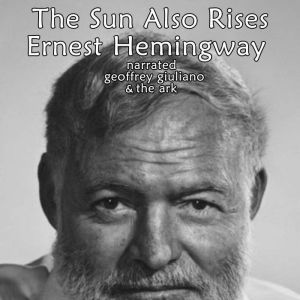

The Sun Also Rises
Author: Ernest Hemingway
Narrator: Geoffrey Giuliano, The Ark
Unabridged: 6 hr 49 min
Format: Digital Audiobook Download
Publisher: Author's Republic
Published: 08/03/2022
Synopsis
The novel is a roman à clef: the characters are based on real people in Hemingway's circle, and the action is based on real events, particularly Hemingway's life in Paris in the 1920s and a trip to Spain in 1925 for the Pamplona festival and fishing in the Pyrenees. Hemingway presents his notion that the "Lost Generation"—considered to have been decadent, dissolute, and irretrievably damaged by World War I—was in fact resilient and strong. Hemingway investigates the themes of love and death, the revivifying power of nature, and the concept of masculinity. His spare writing style, combined with his restrained use of description to convey characterizations and action, demonstrates his "Iceberg Theory" of writing.

